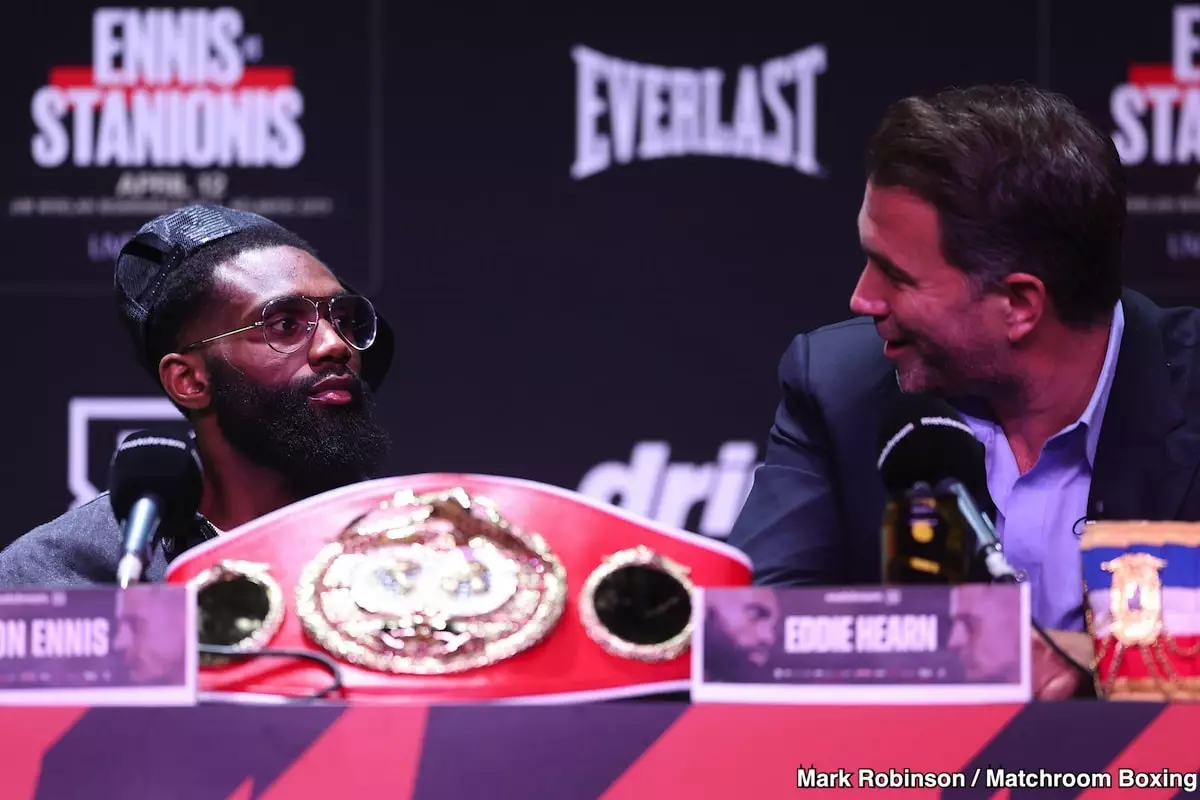In the high-stakes world of boxing, the welterweight division stands out not just for its fierce competition but also for the high financial rewards that come with it. Jaron ‘Boots’ Ennis, an undefeated fighter with an impressive record of 33 wins and 29 knockouts, finds himself at the center of controversy following a perceived snub of a significant fight against fellow contender Vergil Ortiz Jr. With Ortiz displaying an intimidating performance that could easily establish him as a dominant force in the sport, the question arises: Did Ennis genuinely sidestep this valuable opportunity, or is he the victim of a narrative crafted from a blend of misinformation and speculation?
A Miscommunication or a Strategic Play?
Boots Ennis has asserted that he did not duck the potentially lucrative bout with Ortiz in favor of a fight against Eimantas Stanionis. He attributes the fallout to “miscommunication,” insisting that the narrative surrounding his decision has been misinterpreted by fans and commentators alike. However, when scrutinized closely, it appears that Ennis’s preference to stick within the welterweight class contrasts sharply with the expectations of fight enthusiasts who hunger for electrifying matchups.
Promoter Eddie Hearn has echoed this sentiment, confirming that Ennis was inclined to remain at 147 pounds. This decision raises eyebrows, especially when the prospect of an $8 million payday against Ortiz is thrown into the mix. While Ennis presents a case of preserving his trajectory at welterweight, one must wonder if he is consciously avoiding a clash with an opponent whose current form is lethal. In the realm of boxing, avoiding formidable adversaries, particularly when there’s a potential to taint an unbeaten record, raises red flags.
The Weight of Public Perception
In the weeks following the fight’s collapse, Ennis faced significant backlash from the boxing community. Critics have been quick to label him as a fighter reluctant to engage with elite competition. “Ain’t nobody be ducking. Y’all crazy,” he passionately asserted in response to the accusations. However, this rebuttal does little to quell the suspicions surrounding the true motivations behind his fight choices. In sports, especially in boxing, where public opinion can be as volatile as a punch thrown in the ring, perceptions often dictate the legacies of athletes more than the actual facts do.
Ennis’s awareness of this reality is palpable. In a conversation with boxing commentator Chris Mannix, he admitted that the criticism was new territory for him, hinting at the emotional weight of public scrutiny. “I’m not worried about those guys right now,” he said, indicating a keen focus on his upcoming fight, yet the question remains whether he is truly unfazed or if the fallout has chipped away at his confidence.
The Role of Social Media and Fan Narratives
As we navigate this complex boxing landscape, the role of social media cannot be understated. The instant analysis and commentary from podcasters and YouTube personalities have positioned them as informal—but significantly influential—critics in the sport. While some voices offer nuanced insights, many are quick to propagate a single narrative without the full context, leading to misconceptions that can overshadow a fighter’s judgment calls. Ennis’s defensive stance against these commentators signals an athlete grappling with the dissonance between public opinion and his personal career strategy.
The vitriol directed at him raises an important conversation about how athletes manage their public personas in an era of relentless scrutiny. Ennis’s acknowledgment of “miscommunication” indicates an industry-wide issue regarding how fights are negotiated, represented, and, ultimately, understood by fans.
The Future of Jaron ‘Boots’ Ennis
The boxing community is left pondering what the future holds for Jaron Ennis. Will he embrace the risks associated with taking on top-tier opponents like Ortiz, or will he continue to pursue fights that secure his safety and reputation? The fallout from this current episode paints a clear picture: fighters are under constant pressure to engage with the best in the business, but the fear of defeat and the implications it carries for their careers are ever-present concerns.
Ultimately, the conversation surrounding Jaron Ennis is essential—not just for understanding his trajectory but for analyzing how the sport, its fighters, and the spectators interact on multiple levels. How he navigates this tumultuous landscape remains to be seen, but one thing is certain: perceptions can shape destinies in boxing, and the truth can often be overshadowed by the noise.

